Do you have a question about the Chevrolet 2004 Corvette and is the answer not in the manual?
Details on manual and power seat adjustments, and seatback latch operation.
Guidance on proper safety belt usage for adults and children, including special considerations.
Information on types of child restraints and their proper use with vehicle safety belts.
Explanation of how air bags work, when they deploy, and safety precautions.
Guidance on regularly checking safety belts, buckles, and other restraint system components.
Procedures for inspecting and replacing restraint system components after a collision.
Information on vehicle keys, ignition, and the importance of not leaving keys in the vehicle.
Details on the Remote Keyless Entry (RKE) system's operation, range, and potential interference.
Explanation of door locks, power locks, lockout protection, and leaving the vehicle secured.
Safety precautions and procedures for opening and closing the hatch/trunk lid.
Safety warning regarding leaving children or pets in vehicles with closed windows.
Information on the vehicle's alarm system, arming, testing, and disarming procedures.
Details on the PASS-Key® passive theft-deterrent system and its operation.
Guidelines for new vehicle break-in and information on the front air dam.
Explanation of the four ignition switch positions: OFF, ACC, ON, and START.
Procedures for starting the engine with automatic and manual transmissions.
Detailed instructions on operating the six-speed manual transmission, including shift patterns.
Instructions on how to set and release the parking brake.
Safety precautions and steps for shifting the vehicle into PARK.
Information on manual rearview, automatic dimming, and outside mirrors.
Details on accessing and using glove box, cupholders, and center console storage.
Instructions and safety precautions for removing, storing, and installing the removable roof panel.
Proper procedures for lowering and raising the convertible top.
Explanation of the memory system for storing seat, mirror, and steering column positions.
A diagram identifying key components of the instrument panel.
How to use hazard warning flashers to alert others and indicate a problem.
Instructions on adjusting the steering wheel position for comfort and access.
Information on adjusting the steering wheel distance from the instrument panel.
Controls for turn signals, headlamps, and cruise control.
Operation of windshield wipers and washers, including intermittent settings.
How to use cruise control, including setting, resuming, and disengaging speeds.
Operation of parking lamps, taillamps, sidemarkers, and headlamps.
Controls for instrument panel brightness, courtesy lamps, and exit/entry lighting.
Explanation of the Head-Up Display features and adjustments.
Information on using vehicle power outlets for accessories and safety precautions.
Details on the Dual Automatic Climate Control System operation and modes.
Description of warning lights, gages, and indicators on the instrument panel.
Overview of the DIC display and its control buttons for vehicle information.
Information on operating the audio system, including radio, cassette, and CD functions.
Advice on defensive driving, avoiding distractions, and maintaining safe following distances.
Information on the dangers of alcohol impairment and its effects on driving ability.
Explanation of the vehicle's control systems (brakes, steering, accelerator) and factors affecting traction.
Details on perception time, reaction time, stopping distances, and anti-lock brake systems.
How the TCS limits wheel spin, especially on slippery roads.
Explanation of the system that helps maintain directional control in difficult driving conditions.
Information on the ride control system and its performance benefits.
Guidance on power steering, variable assist steering, and safe cornering techniques.
Instructions on how to recover the vehicle if wheels drop off the road.
Tips for safely passing other vehicles on two-lane highways.
Understanding skidding and how to react to regain control of the vehicle.
Safety tips for driving after dark, including visibility and hazard awareness.
Precautions for driving in wet conditions, including hydroplaning and wet brakes.
Strategies for navigating city streets safely, focusing on traffic and signals.
Guidelines for safe freeway merging, lane changes, and exiting.
Checklist for ensuring the vehicle and driver are prepared for extended travel.
Tips for driving safely on steep inclines and mountain terrain.
Advice and preparation tips for driving in winter conditions.
Procedures for freeing the vehicle when stuck in various low-traction conditions.
Information on towing your vehicle and proper loading procedures.
Guidance on vehicle weight limits, capacity, and cargo distribution.
Information on obtaining service from dealers and performing DIY service.
Details on recommended gasoline octane, specifications, and additives.
Instructions and safety precautions for refueling the vehicle's fuel tank.
Safety warnings and checks for engine components accessible under the hood.
Procedures for checking, adding, and changing engine oil, including the oil life system.
Instructions on inspecting and replacing the engine air cleaner filter.
Information on checking and changing automatic transmission fluid.
Guidance on checking and adding fluid to the manual transmission.
Information on the hydraulic clutch linkage and fluid checks.
Details on the cooling system, coolant type, and adding coolant.
Instructions for checking power steering fluid level and what type to use.
Guidance on using and adding windshield washer fluid.
Information on brake fluid, checking levels, and brake wear indicators.
Information on the maintenance-free battery and replacement procedures.
Steps for preparing the vehicle for extended periods of non-use.
Procedure for safely jump starting a vehicle with a dead battery.
Instructions on checking and adding lubricant to the rear axle.
Guidance on replacing various vehicle bulbs, including halogen bulbs.
Information on tire maintenance, safety, sidewall labeling, and replacement.
Warning against using tire chains due to clearance issues.
Safety precautions and procedures for lifting the vehicle with a jack.
Procedures for handling a flat tire, especially with Extended Mobility Tires (EMT).
Guidelines for cleaning and maintaining the vehicle's interior and exterior appearance.
Introduction to maintenance requirements and using the schedule.
Details on Maintenance I and Maintenance II service intervals based on time and messages.
Specific services required at different mileage intervals.
Notes and explanations related to specific maintenance items and services.
Owner-performed checks and services at each fuel fill and monthly.
Procedures for checking the starter switch and transmission shift lock.
A table listing recommended fluids and lubricants by usage and part number.
List of common replacement parts with GM and AC Delco part numbers.
Overview of customer assistance, satisfaction procedures, and contact information.
Resource for GM ownership needs, including service reminders and vehicle information.
Assistance for TTY users to communicate with Chevrolet customer service.
Services provided for security while traveling, including fuel delivery and towing.
Information on transportation options available during warranty repairs.
Explanation of vehicle computer systems, monitoring, and data recording.
How to report safety defects to the US government and General Motors.
Details on manual and power seat adjustments, and seatback latch operation.
Guidance on proper safety belt usage for adults and children, including special considerations.
Information on types of child restraints and their proper use with vehicle safety belts.
Explanation of how air bags work, when they deploy, and safety precautions.
Guidance on regularly checking safety belts, buckles, and other restraint system components.
Procedures for inspecting and replacing restraint system components after a collision.
Information on vehicle keys, ignition, and the importance of not leaving keys in the vehicle.
Details on the Remote Keyless Entry (RKE) system's operation, range, and potential interference.
Explanation of door locks, power locks, lockout protection, and leaving the vehicle secured.
Safety precautions and procedures for opening and closing the hatch/trunk lid.
Safety warning regarding leaving children or pets in vehicles with closed windows.
Information on the vehicle's alarm system, arming, testing, and disarming procedures.
Details on the PASS-Key® passive theft-deterrent system and its operation.
Guidelines for new vehicle break-in and information on the front air dam.
Explanation of the four ignition switch positions: OFF, ACC, ON, and START.
Procedures for starting the engine with automatic and manual transmissions.
Detailed instructions on operating the six-speed manual transmission, including shift patterns.
Instructions on how to set and release the parking brake.
Safety precautions and steps for shifting the vehicle into PARK.
Information on manual rearview, automatic dimming, and outside mirrors.
Details on accessing and using glove box, cupholders, and center console storage.
Instructions and safety precautions for removing, storing, and installing the removable roof panel.
Proper procedures for lowering and raising the convertible top.
Explanation of the memory system for storing seat, mirror, and steering column positions.
A diagram identifying key components of the instrument panel.
How to use hazard warning flashers to alert others and indicate a problem.
Instructions on adjusting the steering wheel position for comfort and access.
Information on adjusting the steering wheel distance from the instrument panel.
Controls for turn signals, headlamps, and cruise control.
Operation of windshield wipers and washers, including intermittent settings.
How to use cruise control, including setting, resuming, and disengaging speeds.
Operation of parking lamps, taillamps, sidemarkers, and headlamps.
Controls for instrument panel brightness, courtesy lamps, and exit/entry lighting.
Explanation of the Head-Up Display features and adjustments.
Information on using vehicle power outlets for accessories and safety precautions.
Details on the Dual Automatic Climate Control System operation and modes.
Description of warning lights, gages, and indicators on the instrument panel.
Overview of the DIC display and its control buttons for vehicle information.
Information on operating the audio system, including radio, cassette, and CD functions.
Advice on defensive driving, avoiding distractions, and maintaining safe following distances.
Information on the dangers of alcohol impairment and its effects on driving ability.
Explanation of the vehicle's control systems (brakes, steering, accelerator) and factors affecting traction.
Details on perception time, reaction time, stopping distances, and anti-lock brake systems.
How the TCS limits wheel spin, especially on slippery roads.
Explanation of the system that helps maintain directional control in difficult driving conditions.
Information on the ride control system and its performance benefits.
Guidance on power steering, variable assist steering, and safe cornering techniques.
Instructions on how to recover the vehicle if wheels drop off the road.
Tips for safely passing other vehicles on two-lane highways.
Understanding skidding and how to react to regain control of the vehicle.
Safety tips for driving after dark, including visibility and hazard awareness.
Precautions for driving in wet conditions, including hydroplaning and wet brakes.
Strategies for navigating city streets safely, focusing on traffic and signals.
Guidelines for safe freeway merging, lane changes, and exiting.
Checklist for ensuring the vehicle and driver are prepared for extended travel.
Tips for driving safely on steep inclines and mountain terrain.
Advice and preparation tips for driving in winter conditions.
Procedures for freeing the vehicle when stuck in various low-traction conditions.
Information on towing your vehicle and proper loading procedures.
Guidance on vehicle weight limits, capacity, and cargo distribution.
Information on obtaining service from dealers and performing DIY service.
Details on recommended gasoline octane, specifications, and additives.
Instructions and safety precautions for refueling the vehicle's fuel tank.
Safety warnings and checks for engine components accessible under the hood.
Procedures for checking, adding, and changing engine oil, including the oil life system.
Instructions on inspecting and replacing the engine air cleaner filter.
Information on checking and changing automatic transmission fluid.
Guidance on checking and adding fluid to the manual transmission.
Information on the hydraulic clutch linkage and fluid checks.
Details on the cooling system, coolant type, and adding coolant.
Instructions for checking power steering fluid level and what type to use.
Guidance on using and adding windshield washer fluid.
Information on brake fluid, checking levels, and brake wear indicators.
Information on the maintenance-free battery and replacement procedures.
Steps for preparing the vehicle for extended periods of non-use.
Procedure for safely jump starting a vehicle with a dead battery.
Instructions on checking and adding lubricant to the rear axle.
Guidance on replacing various vehicle bulbs, including halogen bulbs.
Information on tire maintenance, safety, sidewall labeling, and replacement.
Warning against using tire chains due to clearance issues.
Safety precautions and procedures for lifting the vehicle with a jack.
Procedures for handling a flat tire, especially with Extended Mobility Tires (EMT).
Guidelines for cleaning and maintaining the vehicle's interior and exterior appearance.
Introduction to maintenance requirements and using the schedule.
Details on Maintenance I and Maintenance II service intervals based on time and messages.
Specific services required at different mileage intervals.
Notes and explanations related to specific maintenance items and services.
Owner-performed checks and services at each fuel fill and monthly.
Procedures for checking the starter switch and transmission shift lock.
A table listing recommended fluids and lubricants by usage and part number.
List of common replacement parts with GM and AC Delco part numbers.
Overview of customer assistance, satisfaction procedures, and contact information.
Resource for GM ownership needs, including service reminders and vehicle information.
Assistance for TTY users to communicate with Chevrolet customer service.
Services provided for security while traveling, including fuel delivery and towing.
Information on transportation options available during warranty repairs.
Explanation of vehicle computer systems, monitoring, and data recording.
How to report safety defects to the US government and General Motors.
| Brand | Chevrolet |
|---|---|
| Model | 2004 Corvette |
| Category | Automobile |
| Language | English |
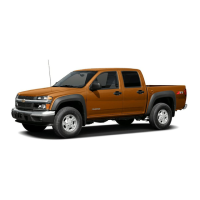


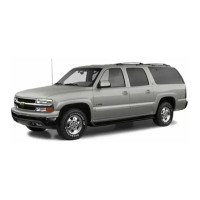
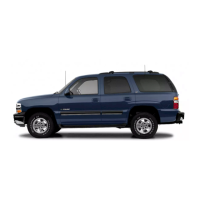
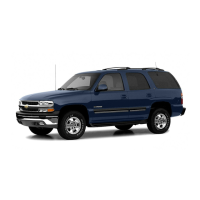

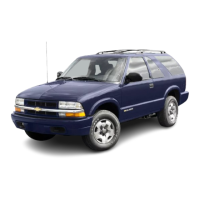



